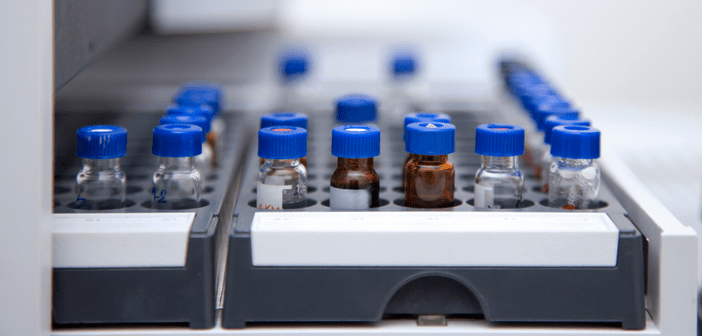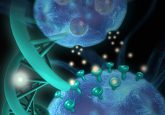Beyond the void

In this column, Robert MacNeill (Pharmaron, PA, USA), explores the roots of chromatographic and mass spectrometric bioanalysis and gives a current overview of these techniques.
Robert MacNeill, Director of Bioanalysis at Absorption Systems, a Pharmaron Company, received his Bachelor’s degree with Honors in Chemistry from Heriot-Watt University then his MSc in Analytical Chemistry from the University of Huddersfield, both in the UK. Robert is also a Chartered Chemist and a Fellow of the Royal Society of Chemistry. With 25 years of experience in all aspects of quantitative bioanalytical LC–MS method development, 16 of these years leading method development and R&D activities. Robert is also a regular author, speaker and recognized expert and innovator in the field.
In light of my perception of many changes happening recently in the bioanalytical community, the general movement of roles and responsibilities, numbers of people shifting between organizations and opportunity aplenty, I thought it apt to consider some important roots of chromatographic bioanalysis in this particular contribution. Many folks may be finding their feet in this predicament. Chromatographic and mass spectrometric bioanalysis, collectively, is what happens to be my thing, along with a penchant for questionable efforts toward descriptive and dramatic written composition.
Without further ado, let’s hurl our attention out into the void, but having more than an inkling of what is out there. There are some aspects much to do with LC method development and preserving method integrity that pops up repeatedly, as concepts that are more unknown than they should be. The retention factor, known as ‘k’, is one example. There used to be a prime on ‘k’, but no longer, for those wondering. The retention factor is synonymous with isocratic elution, where the composition of the mobile phase remains the same, but there’s also an analogy for gradient elution. In simple terms, what it comes down to is that there is no escape from the requirement to properly establish that there is an adequate minimum of retention, and similarly not too much. In my experience, it’s the failure to push things off the void marker, the solvent front, that is by far the most frequent issue. It’s very important to use the column dimensions together with relevant extra-column volume, in conjunction with the flow rate, to calculate the void time. Then, to attain the minimum retention factor of 2, three void times must pass before elution occurs. Why do we want this minimum? We want the selectivity that comes with the powerful chromatographic dimension. We need it to attain the best chance of resolution, regarding other analytes and interferences. Ultimately, all leading to a great method performance. That number of 2, in fact, marks the beginning of the most fruitful region of retention as regards this purpose, when k is between 2 and 10 it is most practical and accepted. This is all with reference to how it sits in the all important resolution equation:
Rs = (√N/4).(k/(1+k)).((α-1)/α)
Whether isocratic or gradient elution, it’s always good practice to check for three voids’ worth of retention. Sometimes we can dip below 2 towards 1 and still show a rugged method, but it’s encroaching on dangerous ground, especially with bioanalytical extracts. And even more so with a relatively non-selective sample extraction where an abundance of interferences will be present and eager to compromise your method performance.
As you bear down on zero retention, where k approaches 0, it is of course the most precarious situation to put yourself and your solutes in. Never mind poorly retained coeluting interferences, just the presence on the void edge can bring aberrations and non-uniformity to peak shape.
Rounding off the retention riposte, there is an unfortunate phenomenon too often noticed in the literature whereby oversized columns are used at healthy flow rates and analytes elute with nice sharp peak shapes within a desirable run time of a few minutes. When using such a column, and in such cases, they are 4.6 mm internal diameter, the void time alone is typically in the order of minutes. For instance, it so happens that a 100 x 4.6 mm column with a 1 mL/min flow rate has about a 1 minute void. Therefore, we would look for 3 minutes minimum retention. However, in quantitative bioanalysis, that’s much more akin to what we look for in terms of the complete run time. Instead, in such cases, retention times would be typically 1 to 2 minutes, where k is 0 to 1. Peaks may be sharp but that’s really only because they haven’t had any chance to broaden, being effectively spat out by the column and the sharpness may seem a beneficial aspect; but I would maintain it’s far better to avoid the risks of poor retention as detailed. The way to regain method integrity would be to translate the method to a narrow internal diameter column such as 2.0 mm, adjust the flow as appropriate to remain within system pressure limits and use your various tools to set the conditions to allow decent retention to manifest. The void will then ideally be a small fraction of a minute and, now featuring k within acceptable limits, there will be resolving power allowing the best chance of overall ruggedness. There will also likely be a reduced flow rate more conducive to best mass spectral sensitivity, in consideration of the strong element of concentration-dependent sensitivity ever-present with electrospray-based techniques.
On a somewhat related note, there’s also the theoretical plate count, N, a measure of efficiency which is also often misunderstood or overlooked. It’s also part of the aforementioned resolution equation, for good reason. From this angle, we can discuss the implications for not only the retention reviling monsters lurking close to the void but those all throughout the run. This property pertains to the peak narrowness, sharpness if you will. The sharper a peak, the more chance there is of resolution from other solutes, not to mention giving more signal to noise. It’s a function of retention time and, inversely, the accompanying peak width. This is not such a serious matter as playing with retention factors, since efficiency is essentially a single property of a given column and as such only merits checking the chromatographic output. However, it is important to retain an understanding of how the plate count ties into the big picture and how changes can be made to increase it via column selection, while balancing other important method parameters like run time and back pressure.
With that, our back to basics journey out into the void is complete and let’s hope we maintain our resolve and sharpness, not migrating from it too soon!
Disclaimer: the opinions expressed are solely my own and do not express the views or opinions of my employer.







